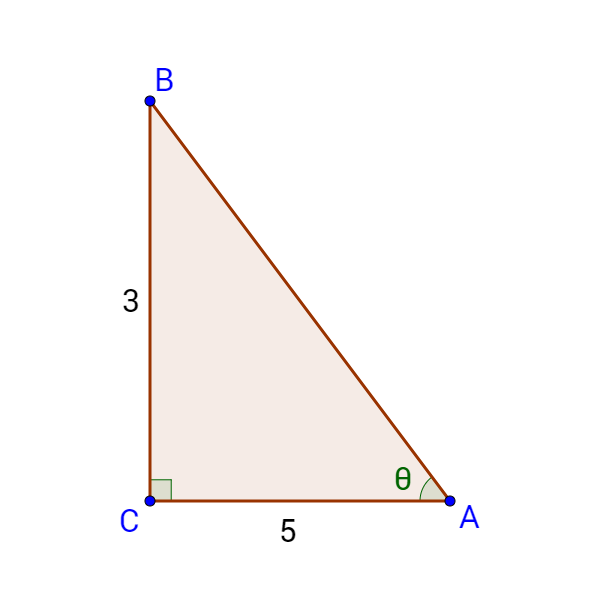Precalculus by Richard Wright
Precalculus by Richard Wright
Let someone else praise you, and not your own mouth; an outsider, and not your own lips. Proverbs 27:2 NIV
Summary: In this section, you will:
SDA NAD Content Standards (2018): PC.5.1, PC.5.3

Using right triangles and measurements of angles of elevation and depression, heights of towers and buildings can be calculated. But first, an introduction to trigonometric identities.
Trigonometric identities are equations that are true for every value of the variable in the domain. Identities provide ways to rewrite and simplify complex trigonometric expressions and equations.
Reciprocal Identities
Quotient Identities
Pythagorean Identities
| sin2 u + cos2 u = 1 | 1 + tan2 u = sec2 u | cot2 u + 1 = csc2 u |
Note: sin2 u = (sin u)2.
| sin (90° − u) = cos u | cos (90° − u) = sin u |
| tan (90° − u) = cot u | cot (90° − u) = tan u |
| sec (90° − u) = csc u | csc (90° − u) = sec u |
The reciprocal identities were already introduced in previous lessons. Refer back to lessons 4-02 and 4-03. The other identities are explained below.
On the unit circle, sin θ = y and cos θ = x. Divide these equations.
Thus,
And the reciprocal is also true.
Think of drawing a right triangle on the unit circle so that one leg is on the x-axis, the other leg is vertical, and the hypotenuse is a radius of the circle.
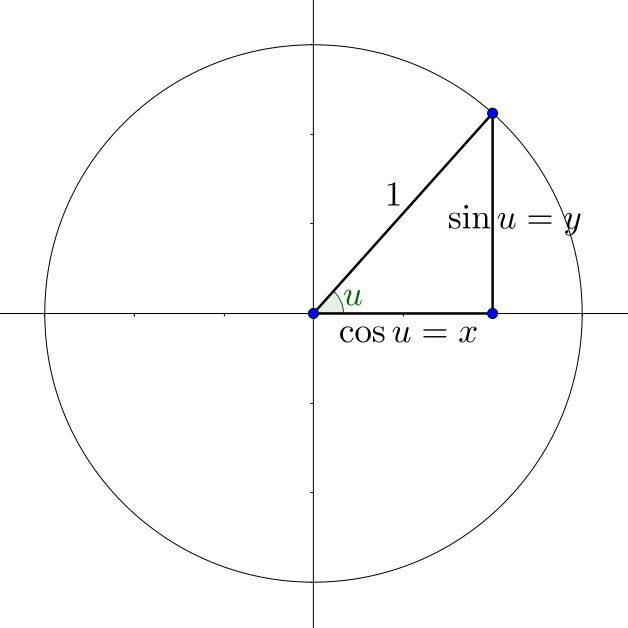
The horizontal leg is the x-coordinate of the point, but on the unit circle cos θ = x. The vertical leg is the y-coordinate of the point, but on the unit circle sin θ = y. The hypotenuse is a radius of the unit circle, so its length is 1. Apply the Pythagorean Theorem.
x2 + y2 = 12
cos2 θ + sin2 θ = 1
Divide this by either sin2 θ or cos2 θ to get the other two Pythagorean identities.
Imagine a right triangle where one acute angle measure is u. The two acute angles in a right triangle are complementary. If the other acute angle is v, see figure 3, then
u + v = 90°
Solve for v.
v = 90° − u
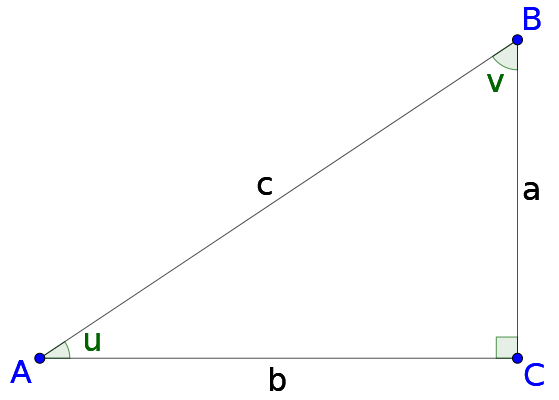
If the sides of the triangle are a, b, and c as in figure 3, then and . Thus, sin u = cos v. Since v = 90° − u,
sin u = cos (90° − u)
The other cofunction identities have similar logic.
Let θ be an acute angle and cos θ = 0.3. Find the values of a) sin θ and b) tan θ using trigonometric identities.
Solution
We know cosine and want to find sine, so pick an identity that has both:
sin2 θ + cos2 θ = 1
sin2 θ + (0.3)2 = 1
sin2 θ = 0.91
sin θ ≈ 0.9539
We know cosine and want to find tangent. From part a, we also know sine, so we can use a quotient identity.
Let α be an acute angle and csc α = 2. Find a) sin α and b) cot α using trigonometric identities.
Solution
We know cosecant and want to find sine, so use an identity with both of those.
We know cosecant and want to find cotangent, so use an identity with both of them.
Let β be an acute angle and tan β = ½. Find a) cot β and b) sec β.
Answers
2;
Some real-world problems can be solved by drawing right triangles and finding unknown lengths. Other problems use angles of elevation and depression.
The angle of elevation is the angle between the horizontal up to an object.
The angle of depression is the angle between the horizontal down to an object.
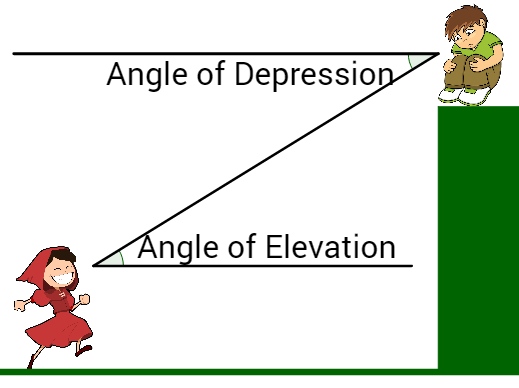

An 8-foot step ladder actually is not 8 feet high. The size of a step ladder is actually the length of the rails that the steps are attached to. When the ladder is in use the rails are slanted so the height is less. If the rails of an 8-foot step ladder make an angle of 50° with the ground, how high is the top of the ladder from the ground?
Solution
Draw a right triangle using the rails of the ladder as the hypotenuse. The hypotenuse is 8 feet long and the angle with the ground is 50°.
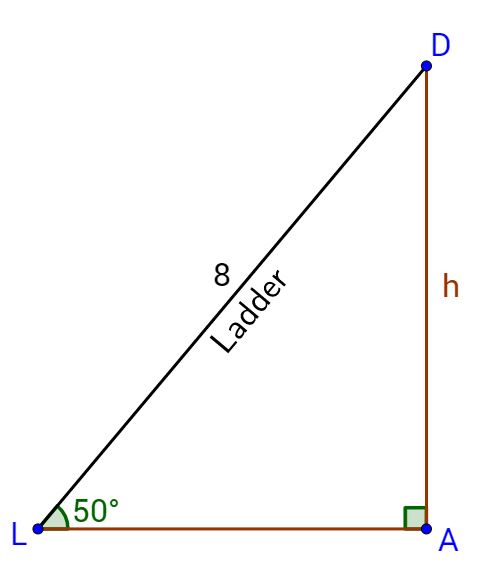
The hypotenuse and one angle are known, and the opposite leg is the unknown. The formula of sine from lesson 4-03 has those three parts. Use sine to solve the problem.
The height of the ladder is actually about 6.12 feet.
Find the length of side a in figure 6.
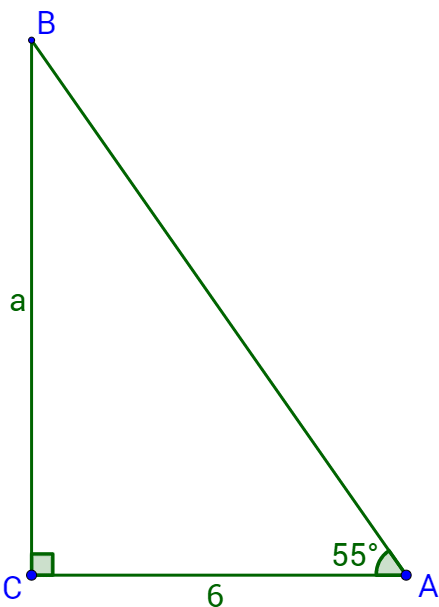
Answer
8.57
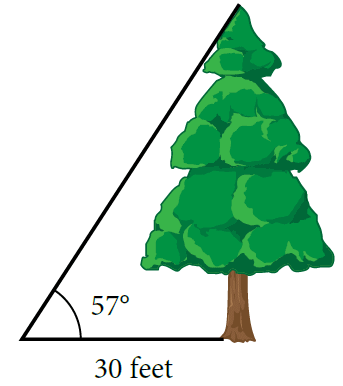
To find the height of a tree, a person walks to a point 30 feet from the base of the tree. She measures an angle of elevation of 57° between a line of sight to the top of the tree and the ground. Find the height of the tree.
Solution
The adjacent leg and angle are known. The height is the unknown. Use a trigonometric formula that has those three quantities.
The height of the tree is about 46 feet.
A hiker is standing on mesa 80 feet above the desert floor. The angle of depression to a creek is 50°. Farther away, the angle of depression to a horse is 30°. How far apart are the horse and the creek?
Solution
Draw a picture to visualize the situation.
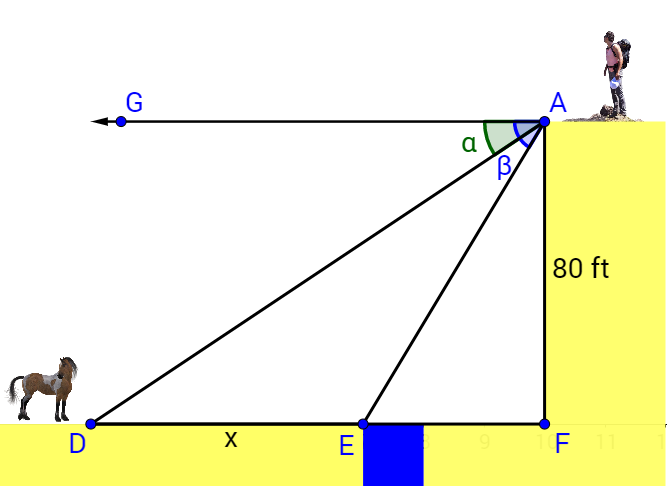
This will be a two-part problem. First, since and are parallel, then ∠α and ∠ADF are congruent. So are ∠β and ∠AEF.
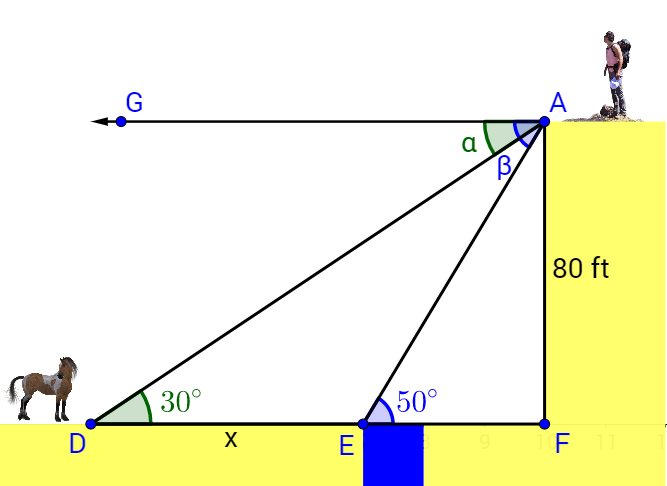
Start by finding the length of \(\overline{DF}\) using ΔADF.
Now find the length of \(\overline{EF}\) using ΔAEF.
Now subtract to find x.
x = DF − EF
x = 138.56 − 67.13 = 71.43
The horse is approximately 71 feet from the creek.
A student is observing a radio tower. Two sets of guy wires are attached at the same spot on the ground 50 feet away from the tower. The other ends of the guy wires are attached to the tower at different points. If the angles of elevation of the guy wires are 50° and 70°, how far apart are they attached to the tower?
Answer
77.8 ft
Reciprocal Identities
Quotient Identities
Pythagorean Identities
| sin2 u + cos2 u = 1 | 1 + tan2 u = sec2 u | cot2 u + 1 = csc2 u |
Note: sin2 u = (sin u)2.
| sin (90° − u) = cos u | cos (90° − u) = sin u |
| tan (90° − u) = cot u | cot (90° − u) = tan u |
| sec (90° − u) = csc u | csc (90° − u) = sec u |
The angle of elevation is the angle between the horizontal up to an object.
The angle of depression is the angle between the horizontal down to an object.

Helpful videos about this lesson.
